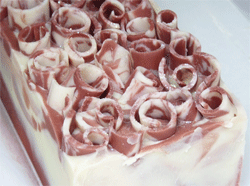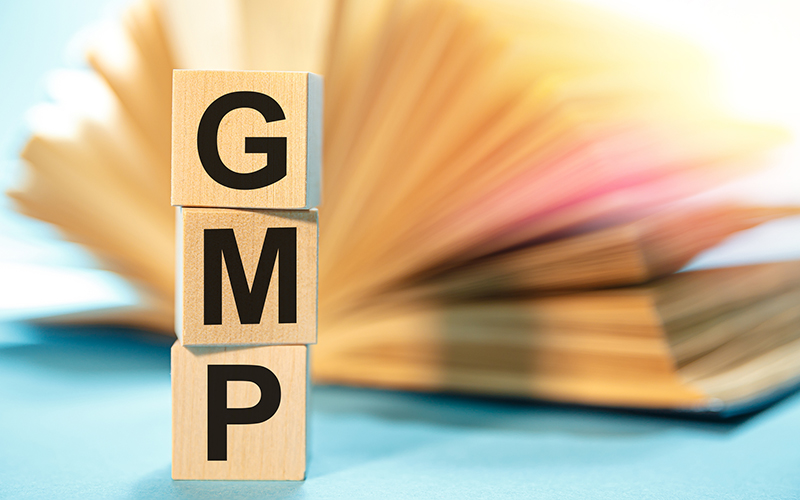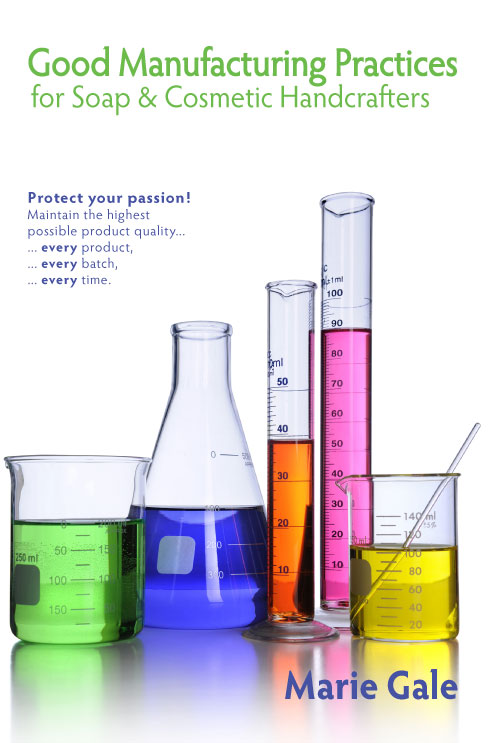Master Formulas are a key part of Good Manufacturing Practices. They’re more than just a list of ingredients; they document what makes your products uniquely yours.
Your Master Formulas should contain every step, trick, and technique you use to make your product—and it should be written in sufficient detail that someone with reasonable familiarity with making that type of product could follow it and end up with exactly the same product you make when you do it.
Soap, for example, is just oils, lye, and water. Mix them together in reasonably right proportions and you get soap. Simple, right? Well, yes and no.
You’ve put a lot of time and effort into developing your unique soap. Part of that will be the types and proportions of oils/fats. But lots of people use the same or similar combinations of oils. So what makes YOUR soap different?
Of course, your choice of additives (herbs, spices, minerals), colorants, and fragrance make a difference. A much more important difference is HOW you combine your oils, lye, water, additives, colorants, and fragrance, as well as the shape of the mold.
The temperature of your oils and lye solution makes a difference in how your soap mixes. A more profound difference in the finished product comes from the temperature at which your pour the finished mix into molds, how you insulate your molds (if you do), and how you take the ambient temperature into account (if you do).

Green Lady Creations
Where colorants are a factor, how you premix them in the oils or water (if you do) and when and how you add them to the soap mix can make a difference in the finished product. When you swirl or use embeds many factors come into play, including the temperature and thickness of the colored soap, how you pour it into the molds, and the tools and techniques used to swirl the colored soap together.
When you take the soap out of the mold is a factor in the “what you do with it.” Stamping, or loaves to be cut into bars, require softer unmolded soap than single bar molds. Soaps to be trimmed may need to be cured for a while and then trimmed. Or to be trimmed immediately if the soap will get very hard. These are all factors that you have probably already figured out for your soap.
Yes, it’s art! But in order to have a consistent finished product (which is the goal of good manufacturing practices) you need to be able to replicate what you’ve done in order to get consistent products.
Just think, if you gave 5 soapmakers the exact same ingredients, it’s entirely possible that you would end up with 5 completely different soaps. One might be a solid colored bar, one a layered bar with a pencil line, two swirled (but completely differently done) and one with piped soap looking like a cupcake!

Your master formula needs to include not just how much of each ingredient, but also exactly what you do with each ingredient as it goes into the soap pot. It should include the checks you make at each step, whether taking the temperature, noting the consistency (what is the standard you use?) or some other test.
At the end of the day, your master formula should be so complete that if I (or some other soapmaker) were to show up in your kitchen, I could follow your master formula and end up with the soap you make, not the soap I would make if I had the same ingredients.
Your good manufacturing practices are all about making sure that your products are of consistent and expected quality, every batch, every bar, every time. Complete master formulas are a key part of that.
NOTE: This post uses the example of soap, but the same principles apply to any type of cosmetic product including lotions, creams, bath salts, bath bombs, lotion bars, perfume, lip products, make-up, etc.



Leave a Reply